Pyle at Play: Memories of Rehoboth Beach
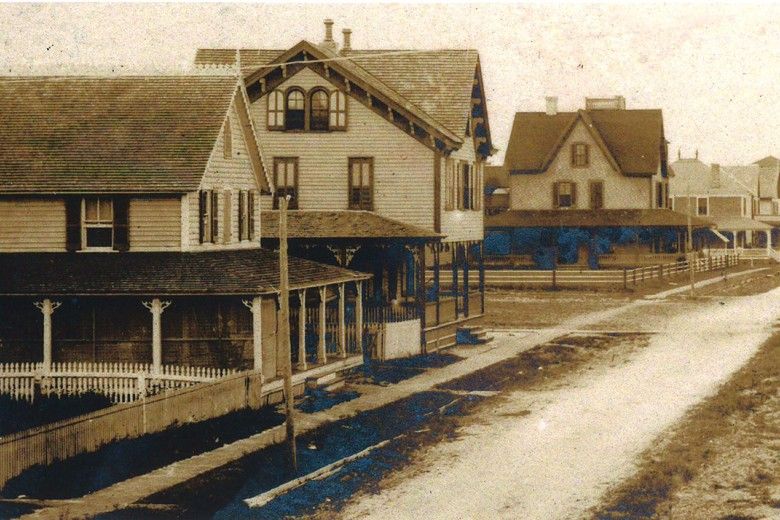
Have you checked out A Passion for Pyle: The Paul Preston Davis Collection, a new digital exhibition from the Brandywine's Annenberg Research Center? Derived from an extensive collection of archival research materials related to artist Howard Pyle, the Davis Collection was created and donated by local collector and historian Paul Preston Davis. The following blog post, written by former Research Center Archivist, Eileen Fay, delves into the stories of Howard Pyle’s summer home at Rehoboth Beach, utilizing research materials found within the Davis Collection.
Among the many avenues explored by Paul Preston Davis's research on Howard Pyle, and contained in materials he donated to the Brandywine, are the various residences in which Pyle lived as both a child and adult. One of these is a summer home at Rehoboth Beach in Delaware, owned by the family of Pyle’s wife, Anne Poole Pyle (1858-1939). It was located near what was once the intersection of Surf Avenue and Baltimore Avenue.
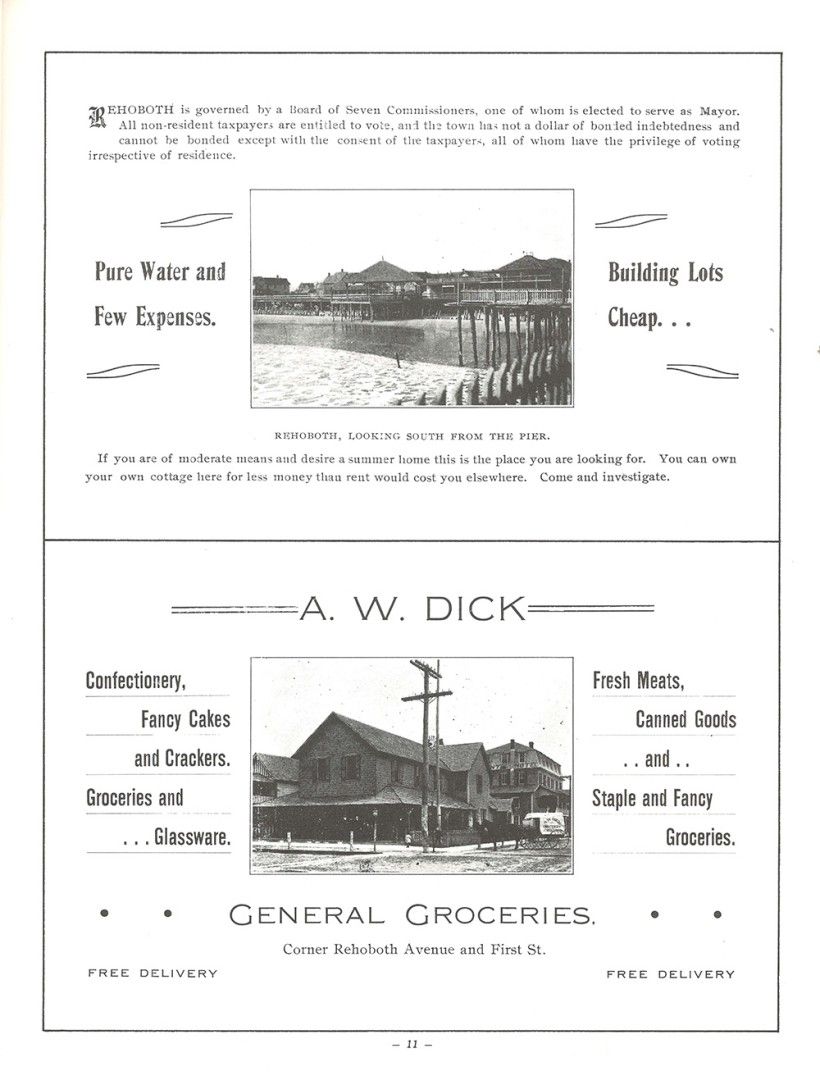
According to Rehoboth Beach Memoirs: From Saints to Sinners by James D. Meehan (Harold E. Dukes, Jr., 2000) – referenced in the Paul Preston Davis Collection and available in the Walter and Lenore Annenberg Research Center – Rehoboth Beach was founded in 1871, when a group of Methodists formed the Rehoboth Association and purchased some 400 acres of land from the John Marsh and Lorenzo Dow families. Their inspiration was the wholesome, idyllic resort community of Ocean Grove, New Jersey.
The end of the decade saw tremendous growth to the new town, thanks to the extension of the railroad line from Lewes, DE to the Methodist camp meeting grounds. Anne Poole Pyle’s father became one of many new summer residents when he constructed his house in 1878. “A number of other building improvements are noticeable, and the house which J. Morton Poole, Esq., of Wilmington, built last season, looks fresh and bright in a new coat of paint,” reported The News Journal of Wilmington on July 10, 1879. Unfortunately, John Morton Poole (b. 1812) would die on November 25 of that year. At the time, Anne Poole Pyle had three living siblings: Alfred Dupont (1847-1921), Thomas S. (1842-1880) and J. Morton Jr. (1855-1913). Ownership passed on to their mother, Ann (Supplee) Poole (1817-1910).
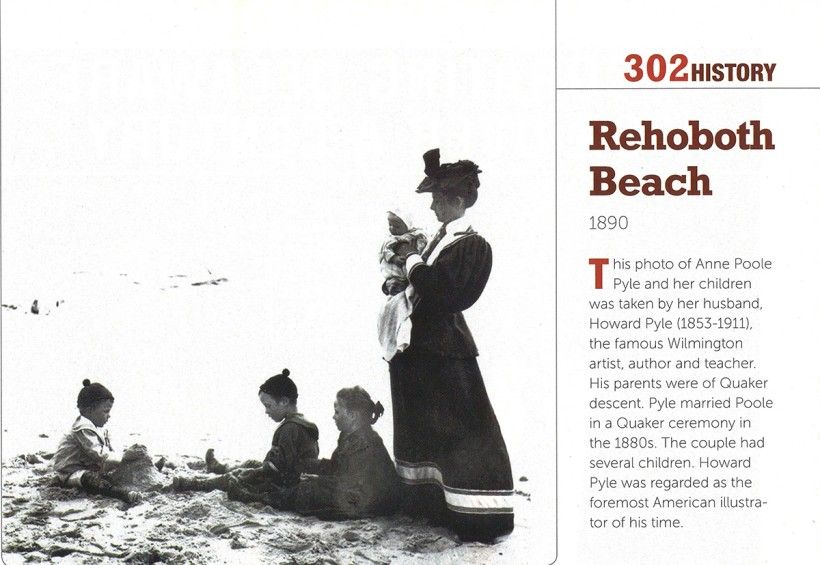
In her paper “Memories of Howard Pyle,” written for Philadelphia’s New Century Club in 1935, former Pyle domestic employee Anna W. Hoopes describes some of his activities while in Rehoboth Beach:
"A set of pictures Mr. Pyle painted and wrote the text for, with decorative head bands and tall pieces were made at Rehoboth one summer, and titled ‘[By Land and Sea].’
The setting required a stranded vessel wrecked on the sandy beach. Such a vessel had gone to pieces during the winter’s storms.
We travelled down the shore every morning for several days, when the summer sun was at its proper height for correct shadows on the old hulk. I was pressed into service as model for the girls, and John Weller, Mr. Pyle’s handyman, posed for the men in each illustration.
These pictures are always shown in the Howard Pyle exhibits in the galleries of the Wilmington Society of Fine Arts [predecessor of the Delaware Art Museum], and attract much interest and admiration.
John Weller, the model, posed as angels and devils, little boys and old men, buccaneers. He was invaluable to the artist in many other ways."
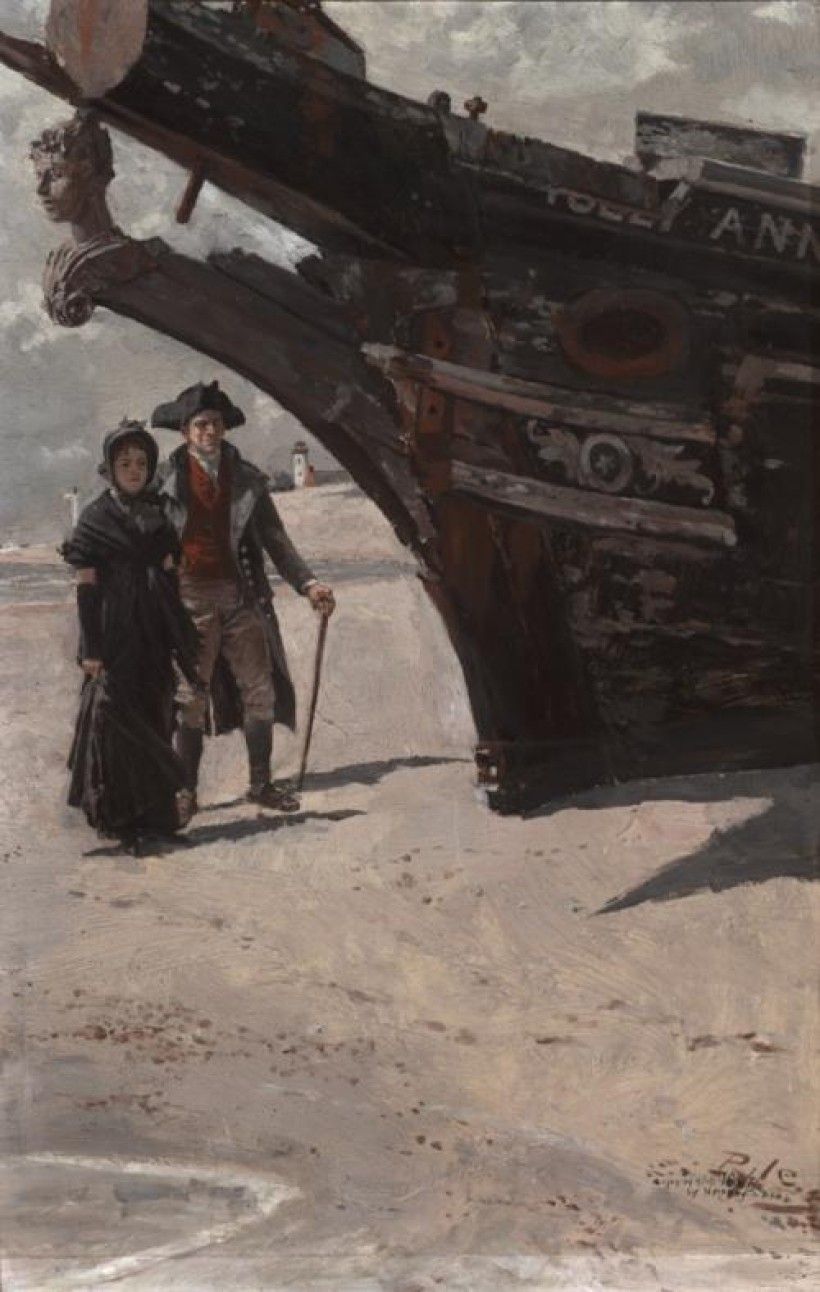
She continues:
"A building back of the house was fitted up as a studio, and there was much work accomplished, but each morning at 11 o’clock all work was laid aside for a dip in the ocean. Quite often a crowd would gather on the beach at the bathing hour to watch for a tall man to come down the boardwalk with his wee daughter on his shoulders to take her for a plunge in the ocean. As the waves broke over them, she always came up smiling, with the salt water dripping from her baby face, gleefully ready for the next roller.
Howard Pyle believed in play as well as work; and for a week or ten days in the summer months, guests would be invited to join the family’s hospitality. Then, trips would be planned for drives back in the country, and a large, two horse beach wagon, driven by one of the natives, would be chartered for the expedition, to visit remote farms up and down Sussex County, in search of antiques, maybe to be used later as 'property' in some illustration for book or story.
Delightful evening gatherings and daytime walks through the pine woods to Frager’s Lake, were among the vacation pleasures, with always the nearby ocean to afford a cooling bath in its salty blue waters."
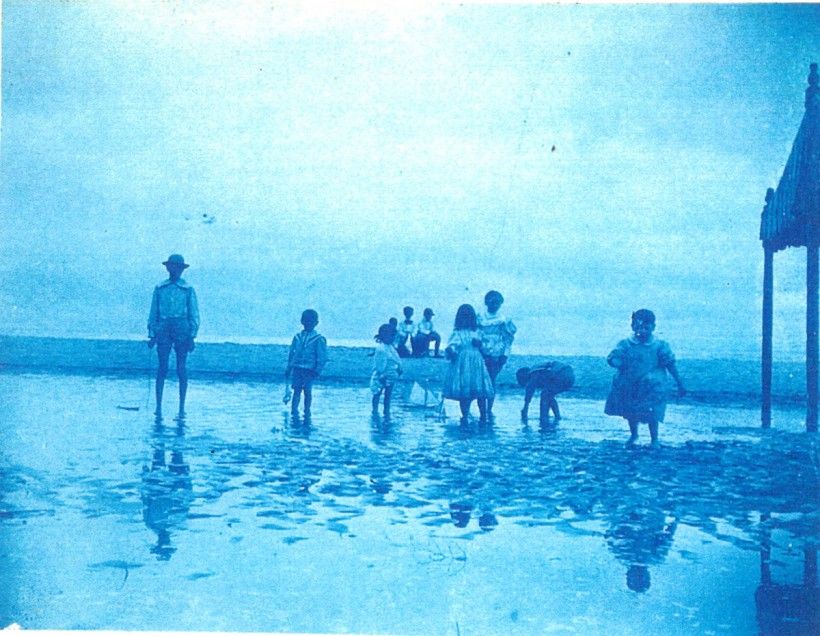
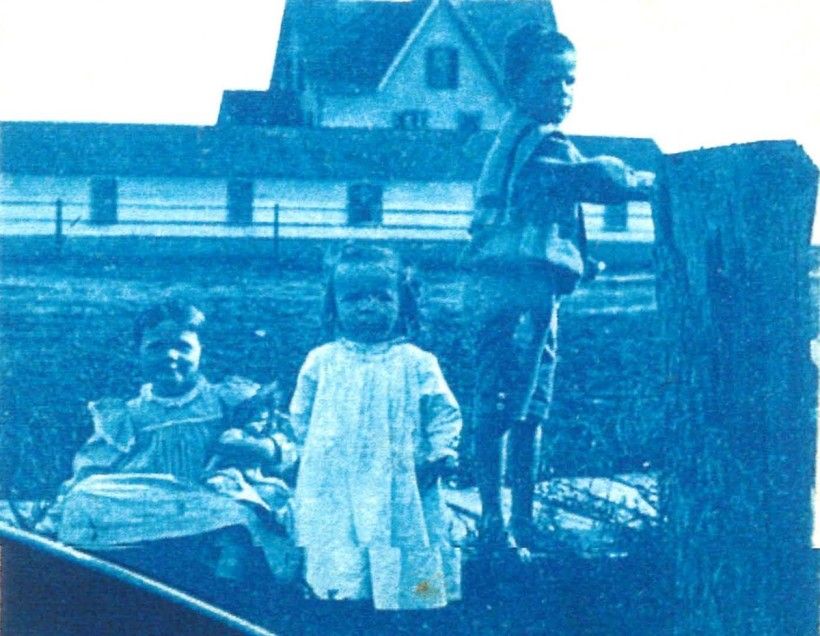
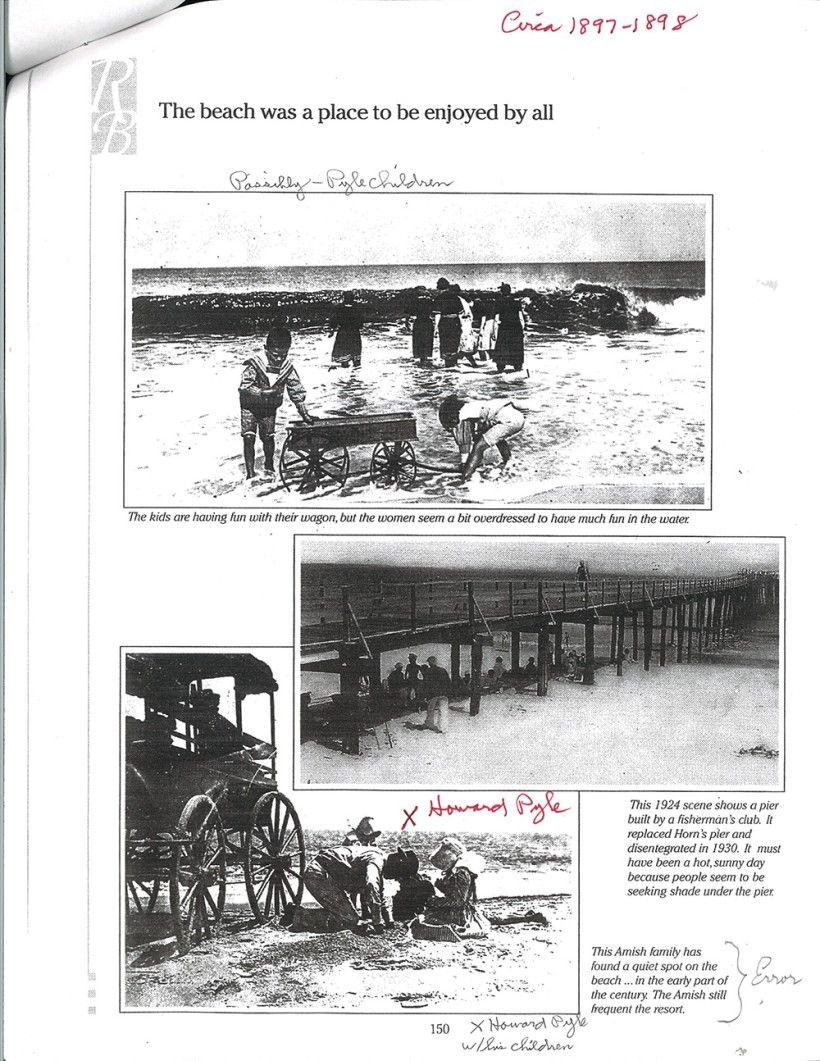
Another picture of Howard Pyle and his children appears in Meehan’s Rehoboth Beach Memoirs, where they are mistakenly identified as an Amish family. “Error,” Davis wrote simply on a photocopy he made of the page.
According to Davis’s research notes, the backyard studio mentioned by Anna Hoopes was later moved to 6th Street, where at one point it served as a gift shop called The Pine Cone. Davis’s friend and fellow Pyle researcher Ian Schoenherr visited Rehoboth in 2002 and investigated further. "[My wife and I] drove over [to 6th Street] and one candidate is the little antique store there, but who knows for sure,” he told Davis via email. Another memory of the studio comes from Pyle’s longtime secretary Gertrude Brincklé (1895-1973). In a 1966 interview with historian Richard K. Doud, she recalled Pyle painting illustrations for his story “The Romance of an Ambrotype” there. The Civil War tale was published in the December 1896 issue of Harper’s New Monthly Magazine.
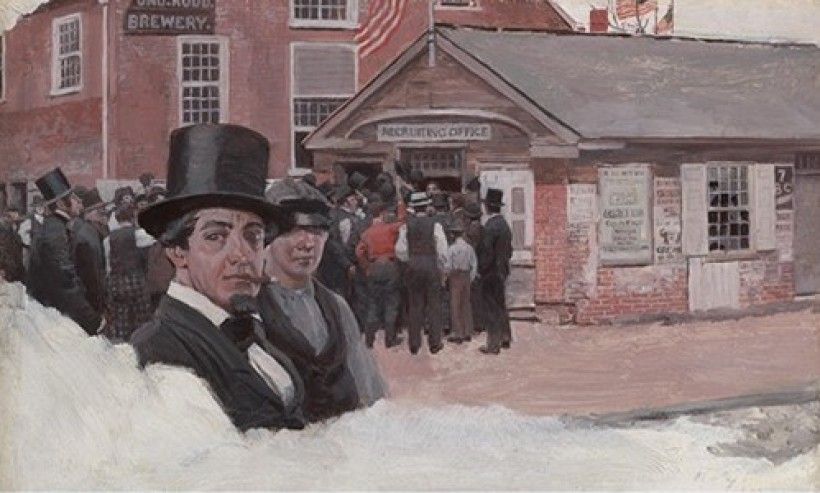
Brincklé further described staying in the Poole cottage with the Pyle family as a child. “Phoebe [Pyle] and I would walk the beach, picking up shells and pebbles, or go in bathing, trying to learn to swim,” she said. Pyle enjoyed taking her and Phoebe out on the surf and promised each girl a Cape May diamond ring if they could find a clear pebble. “On the 4th of July they used to have a flag raising and straw [bale] rides on the beach and Punch and Judy shows.” She also shared a letter Pyle wrote to her father, Major John Rumsey Brincklé, from Rehoboth in June 1896: "We are congratulating ourselves on having borrowed so sweet a little visitor; even the things we know and like, [Gertrude] knows and cares for: ‘Slovenly Peter,’ ‘Alice in Wonderland,’ and ‘Versified Alphabet.’ I think it is Holmes who somewhere says, ‘The mutual appreciation of a jest is a sign of soul, fellowship.’”
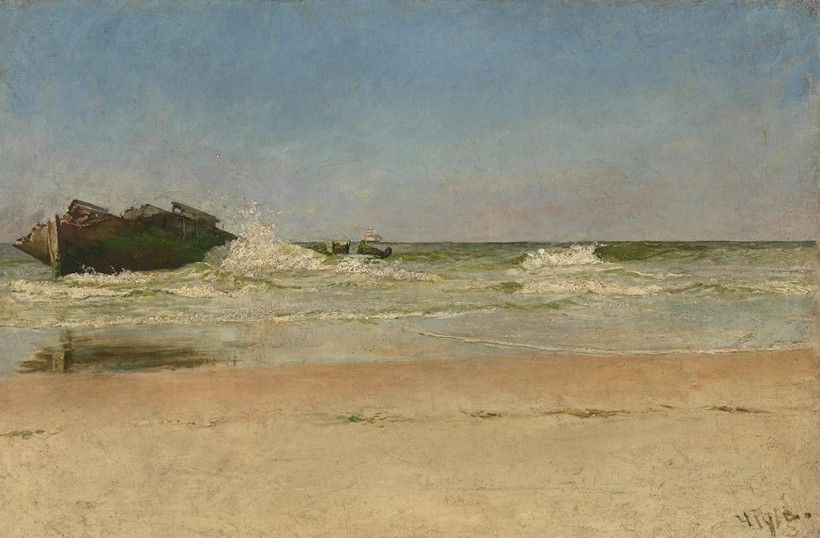
The Pyle family was associated with two other properties in Rehoboth Beach. One was a dwelling owned by Pyle’s daughter Phoebe Churchman Brokaw near Lake Gerar. In a 2003 letter to Paul Preston Davis, Jann Haynes Gilmore, an art historian and independent curator, informs him of a photograph lent to her by Lansdale Humphreys, daughter of Pyle student Thornton Oakley, that depicts another house on Oak Street where Humphreys claims Anne Poole Pyle lived in the 1920s. “It may be that she purchased a different house after Howard Pyle’s death,” says Gilmore. She continues: “I have also been told by several longtime residents in The Pines [neighborhood] that the house on Oak Avenue belonged to [Howard] Pyle. Other sources reference a house closer to downtown, perhaps on Baltimore Avenue.” In his response, Davis clarifies the matter and explains that both the Oak Street and Lake Gerar residences are sometimes confused with the old Poole cottage as the Howard Pyle Summer Home in local memory. Davis’s own research notes state that the Poole home later became the Marlin Guest House under ownership of the Lyman family.
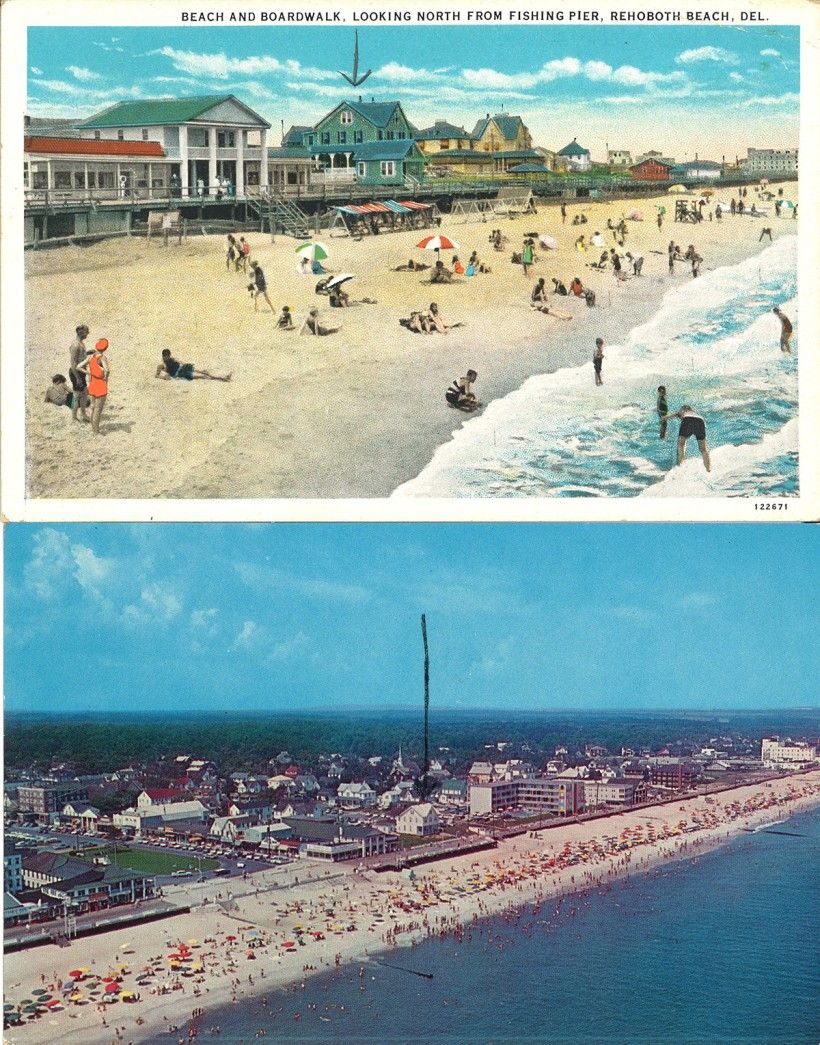
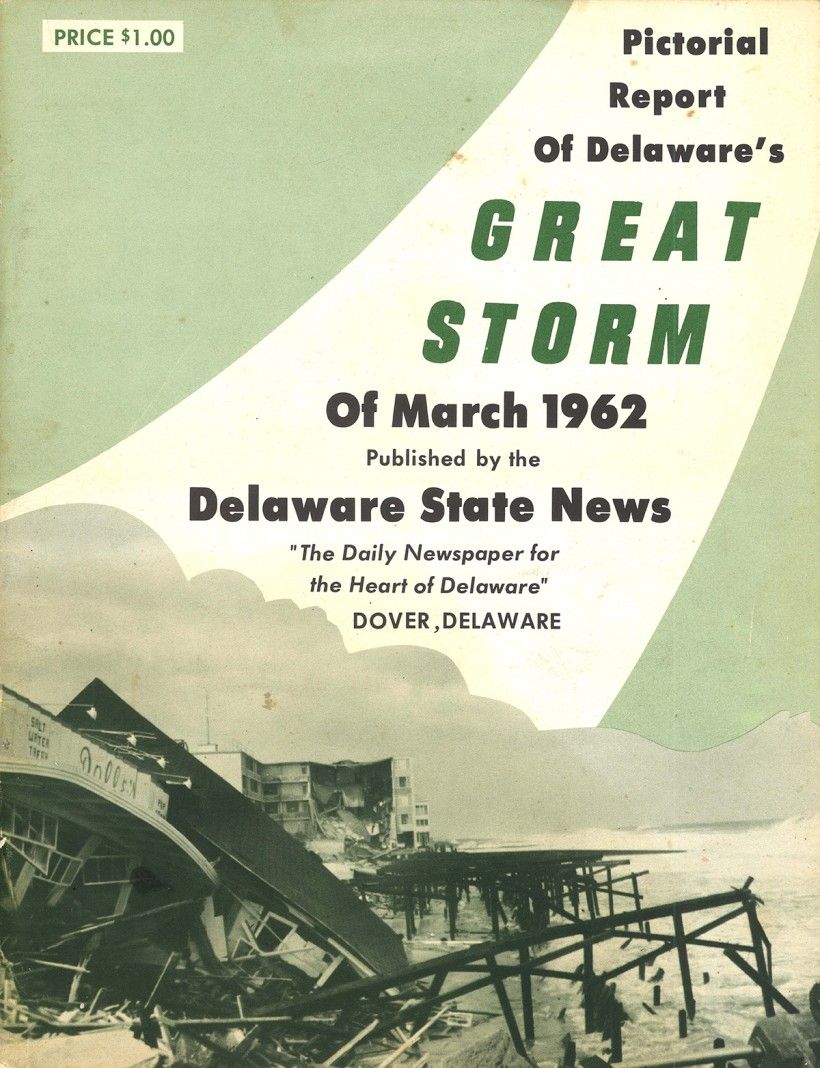
Sadly, the house J. Morton Poole built was swept away in the infamous Great Atlantic Storm of 1962, a Level 5 nor’easter that raged from North Carolina up to New York over the course of five days. “Like a feral animal pouncing on its unsuspecting prey, the March 1962 storm eviscerated coastal Delaware, ripping apart the Rehoboth Beach boardwalk and tearing into some buildings so ruthlessly that there was little left to show they’d existed,” wrote Pam George for the June 2007 issue Delaware Today (available in the Davis collection). “. . . In Delaware, the storm took seven lives and caused more than $70 million in public and private property damage and personal losses. That’s more than $455 million in 2006 dollars.” Wind gusts reached 70 mph, while breaking waves crested at heights of 20 to 30 feet. Despite the carnage, both Rehoboth Beach and Bethany had their boardwalks rebuilt by Memorial Day, spurred by many businesses’ lack of flood insurance and need to recoup their losses.
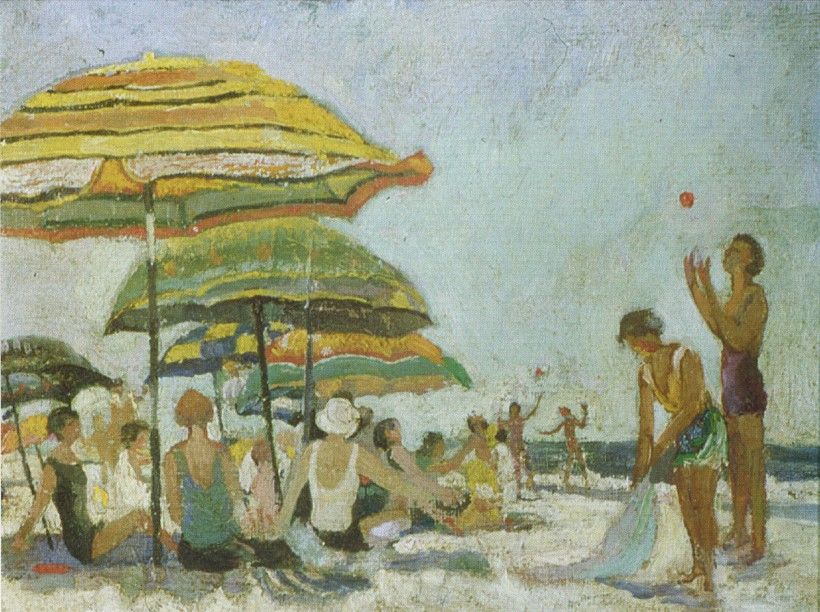
Another lasting Howard Pyle legacy at Rehoboth was his student, Ethel Pennewill Brown Leach (1878-1960), who had attended Pyle’s summer school in Chadds Ford, Pennsylvania. Leach moved to Rehoboth Beach in 1918, where she would maintain a studio and residence for the next four decades. She established Rehoboth Beach’s first art colony in the late 1920s and, in 1928, launched the first Annual Summer Art Exhibition of local and national artists, a festival that would run for over 30 years. Out of this creative ferment grew the Rehoboth Art League, founded in 1938 by Leach and Colonel Wilbur S. and Louise C. Corkran. According to Jann Haynes Gilmore, in the catalog to the exhibition she curated, Ahead of Her Time: Ethel P.B. Leach and the Making of the Rehoboth Art Colony (Rehoboth Art League, March 6-April 25, 1999):
"At the Art League’s dedication ceremonies, it was decided that a fitting way to honor the memory of Howard Pyle, the spiritual leader of the arts in Delaware, was to ask his widow Annie Pyle, to sign her name on the original doors of the Paynter House, which served as the Art League’s first studio. On June 18, 1938, Annie Pyle was invited to sign her name, and other notables followed including Thornton Oakley, a well-known Pyle student from Philadelphia who spoke at the ceremony; his wife Amy, who collaborated with him on travel books; Ethel P.B. Leach; Will Leach; Ethel and Orville Peets; Louise C. Corkran; and other prominent townspeople who were present at the day’s events.
Through the succeeding decades of the 1940s and 1950s, and occasionally in more recent years, more than 270 signatures have been affixed to the four doors in different locations at the Rehoboth Art League. These signers represent not only studio artists, but musicians, engineers, politicians, diplomats, community leaders, local business people, and members of society."
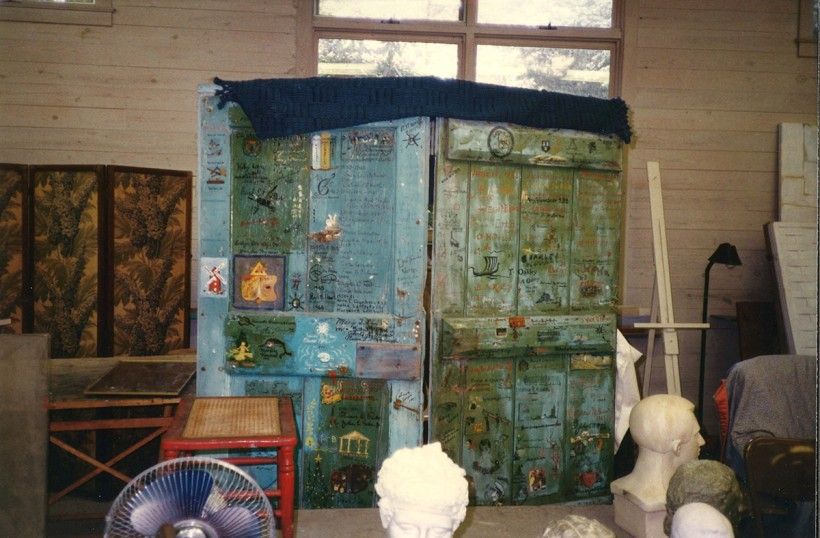
“In Rehoboth, as I always do, I made a pilgrimage to the Pyle Cottage on the beach, where hospitality reigned for so many summers,” Caroline (Bush) Ward, widow of Christopher L. Ward, wrote to former Pyle student Bertha Corson Day Bates circa 1948. “He was always kindness itself to me, and inspiration [as] well. One of my clearest and most indelible impressions and memories.” Though the man is long gone, his influence continues. The Rehoboth Art League continues to thrive and keep Rehoboth Beach on the map as one of America’s top art towns.
Unless otherwise noted, archival scans are from the Paul Preston Davis Collection in The Walter & Leonore Annenberg Research Center at the Brandywine Museum of Art.
Header image: Photograph showing the Poole house (center). The source of this photograph from the Paul Preston Davis Collection is unidentified.